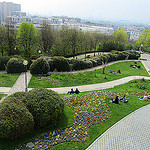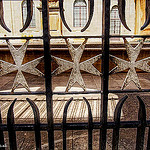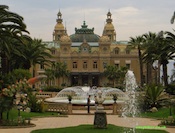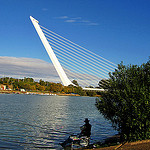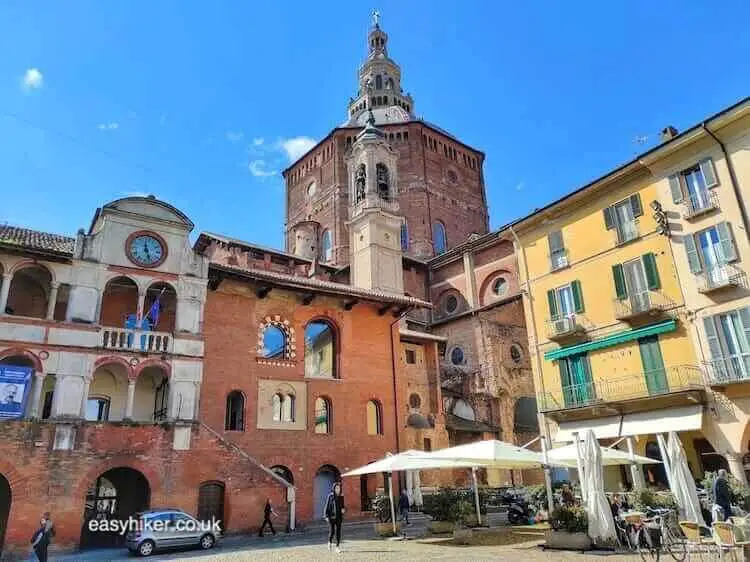You are in London for a few days and looking for a “typical” local park where you can roam and relax a little?
Here are six reasons why you should shun the famous public gardens in Central London and pick another park instead, one on the fringe of the town centre but still easy-to-reach by public transport (even on foot, if you insist) and excellent value-for-time.
Welcome to Battersea Park.

Six Reasons to Visit Battersea Park
Reason 1: You will find everything here that makes London’s parks so uniquely attractive.
A visit to a London park has a place on the to-do list of nearly every visitor, just like a trip to the London Eye or Madame Tussaud’s. You want to go to Hyde Park or Kensington Gardens – and so does everybody else. As a consequence, these Central London parks places are, on most days, as crowded as near-by Oxford Street. But there is no need to join the crowd. For a leisurely stroll around a picturesque pond …

… works of modern art that complement the beauty of the natural scenery in interesting and challenging ways (this is one of Barbara Hepworth’s)…

… and places to rest and watch the world go by, …

… you can come just as well to Battersea Park.
And in contrast to the busier places uptown, no chatter and shrieking from excited hordes of teenage day trippers will drown out the birdsong for you. Over here, you can enjoy all the charms and graces of a London park in calm and comfort.
Reason 2: On top of that, Battersea Park possesses charms and graces that you will not find in any other London park. Such as John Gibson’s subtropical gardens.

In 1835, a Victorian gentleman by the name of John Gibson went on a journey to India, Madeira and South Africa to source orchids and other rare tropical plants for the Duke of Devonshire.
30 years later, having just been appointed as the first superintendent of the new Battersea Park, Gibson used all of the knowledge he had acquired on that journey to create England’s first public “subtropical oasis”, planting a large variety of colourful shrubs and flowers behind a carefully engineered shelter belt of earth and trees that guaranteed a suitable micro-climate.
During WWII, this oasis became a victim of circumstances when gardens all over the UK were converted to allotments in order to feed the local population, but in 2004, the local council found the money to restore Gibson’s subtropical gardens to their former glory.
Today, this corner of Battersea is as colourful as it has ever been, even in the late autumn and winter.

Reason 3: What’s Made Battersea Park Famous.

The Buddhist shrine known as the London Peace Pagoda is Battersea Park’s most distinctive feature. It is, in fact, so famous that even North Londoners have heard about it. That, for anything south of the river, is surely the gold standard of recognition.
Surprisingly, it took the Peace Pagoda less than 30 years to reach this status: it was built in the mid-1980s by monks, nuns and followers of Nipponzan Myohoji, the most pacifist branch of Japanese Buddhism, to “shine a light in the darkness of the present day world, a visible prayer to awaken humanity to peace”.
Nipponzan Myohoji have erected several such peace pagodas across the world including one in Vienna, one in New Delhi and three in the USA (San Francisco, Reading, PA, and Leverett, MA).
The shape of the pagoda is attractively echoed elsewhere in the park …

… as is its spirit. Right past the Peace Pagoda runs the Sri Chinmoy Peace Mile, which was inaugurated in 1986 by the Indian spiritual leader Sri Chinmoy.
Sri Chinmoy – whose followers included many famous athletes including the track-and-field legend Carl Lewis – was an avid long-distance runner himself and believed that intense physical activity could open the gates to self-transcendence.
The London Peace Mile – one of many such Peace Miles around the world – is meant to provide runners with an opportunity of measuring their athletic progress (it is really one mile long) and of allowing them to find inner peace while “enjoying the beautiful surroundings of the park and the Thames”.

Reason 4: The river views of Battersea Park
Whether you have come here to run the Peace Mile or whether you are more in the mood for a gentle stroll, Battersea Park offers you splendid views of the river Thames …

… all the way up to the 19th century Albert bridge and beyond. That, too, is something that no other major green space in central or inner London can offer you: none of them borders on the Thames.
Reason 6: The park’s chequered history, featuring the Duke of Wellington in fighting mode, nightly brawls and the birth of organized football.
Many of the things that you can see in today’s Battersea Park may look familiar from other London parks …

… but this is where the similarities end.
For one, Battersea was, unlike the central London parks, never part of any royal estate, neither as a formal garden nor as a hunting ground. The area was a marshland located on the bawdy end of the bawdy South Bank where regulations of what you could do and could not do were never as strict as north of the river.
What is now Battersea Park was then occupied by the kind of businesses that would not be tolerated in the city centre, by notorious pubs – noisy halls with nightly brawls – and a well-known dueling ground that was in use until the 19th century.
The Duke of Wellington once fought here and may have fired his shot at the very spot where you are sitting. Think about that.

Battersea Park was a 19th century project and has a close link with another innovation of the period: the game called association football. The first match ever played under the official Football Association rules took place here in January 1864.
A few years later, Battersea Park also provided a temporary home for the Wanderers, a team without a stadium of its own (as the name implies) and which, in 1872, won the first ever FA Cup.
Reason 6: One of London’s most iconic buildings is just a few blocks away and finally, after decades of uncertainty and neglect, open to the public.

You do not recognize the building but think it looks intriguing? And you want to find out more about it and its background story? Then we expect you back next week when everything will be revealed.

